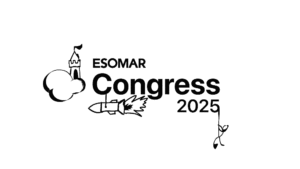 In the food and beverage industry, success begins and ends with taste. A product can look beautiful, carry strong branding, or make impressive health claims, but if consumers don’t like how it tastes, it will never stand the test of time on the shelf. That’s why market research taste testing remains one of the most reliable, data-backed methods for evaluating consumer perception before launch.
In the food and beverage industry, success begins and ends with taste. A product can look beautiful, carry strong branding, or make impressive health claims, but if consumers don’t like how it tastes, it will never stand the test of time on the shelf. That’s why market research taste testing remains one of the most reliable, data-backed methods for evaluating consumer perception before launch.
When brands want reliable data about how consumers experience a new formulation, in-person taste testing offers clarity and confidence that cannot be replicated through digital-only research or at-home studies. It’s one of the methods that connects the sensory aspects of food directly to measurable consumer insights.
Many brands rely on in-person studies at Decision Point Research’s Central Location Testing facility to guide early formulation and validate flavour performance. Taste testing transforms subjective experiences into quantifiable insights. It helps brands identify which formulations resonate most, uncover what drives preference, and confirm that a product delivers the flavour experience consumers expect.
What you will learn:
- Why taste testing is critical for food and beverage product development
- How in person market research provides more reliable data than digital-only or at-home testing
- The science behind sensory evaluation and how it guides formulation decisions
- When to choose Central Location Testing over Home Use Testing
- How Decision Point Research conducts controlled, data-driven taste tests that support successful product launches
The Value of In Person Market Research
In-person testing has long been the benchmark for sensory research because it offers one thing no virtual or home-use method can: control. Every aspect of the testing environment, from lighting and temperature to portion size and timing, can influence how consumers perceive a product.
Conducting taste tests in a controlled location ensures each participant experiences the product under identical conditions, eliminating variables that can distort results.
The international standards that guide sensory science confirm this. Guidance from ISO on consumer testing and test room design both emphasize the importance of conducting studies in standardized, neutral environments where participants can focus on the product itself rather than the setting around them. These principles form the foundation of rigorous market research taste testing and are central to the methodology used at our Central Location Testing facility in Toronto.
When participants evaluate products in this environment, the data collected represents true consumer perception. Every aroma, texture, and flavour note is assessed without external bias. For product developers, marketers, and sensory scientists, this precision can mean the difference between a successful product launch and a costly reformulation.
The Science Behind Market Research Taste Testing
The process of market research taste testing is rooted in sensory science – a discipline that blends human biology, psychology, and statistics to understand how people experience food and drink. Each test is designed to answer a specific question: Which product performs better? How do variations in sweetness, saltiness, or aroma influence liking? What sensory elements drive repeat purchase intent?
To answer these questions, trained researchers structure taste tests using standardized techniques. Consumers are presented with coded samples, served in random order, and asked to rate each one according to defined sensory scales. This approach, often referred to as hedonic testing, removes branding and expectation from the equation so feedback focuses entirely on taste.
By isolating these variables, researchers can uncover why one formulation performs better than another. Perhaps a particular seasoning blend enhances perceived freshness, or a slightly different mouthfeel creates a more satisfying experience. These findings allow teams to make evidence-based decisions about which recipes to advance, reducing guesswork, saving development time, and strengthening confidence at launch.
Why Controlled Testing Outperforms At-Home Studies
Both Central Location Testing (CLT) and Home-Use Testing (HUT) have value, and this distinction is one of the most common questions brands ask when exploring market research taste testing. Understanding the strengths of each method is central to choosing the right approach.
In recent years, more companies have turned to online or home-use testing to gather consumer feedback. While these methods offer convenience, they also introduce significant sources of bias. A respondent’s mood, environment, or even the plate they use can alter how they perceive taste. When someone evaluates a product at home, they’re surrounded by context – family opinions, daily routines, and preconceptions – that shape their response in ways that can be difficult to measure.
Controlled environments in central location testing correct for that. In 2021, research published in the Journal of Dairy Science compared CLT and HUT and found that in-person evaluations yielded more discriminative results. Participants in CLT settings were better able to differentiate subtle differences in flavour and texture, providing richer insights for product teams.
Another 2021 study by Sustainability explored how labelling influences consumer perception and found that identical products were often rated higher when presented with cues such as “Fair Trade” messaging. The results showed how easily environmental and informational cues can reshape a consumer’s experience of taste. By removing these cues, in-person testing keeps the focus on the product itself and ensures that feedback reflects genuine sensory performance rather than the power of suggestion.
When to choose Central Location Testing (CLT):
|
When to choose Home Use Testing (HUT):
|
In Person Market Research Helps Understand Changing Consumer Expectations
Consumer expectations around food and beverage products are evolving. According to the 2023 Consumer Perceptions of Food report, people are increasingly motivated by authenticity, quality ingredients, and sensory appeal. Taste remains the top driver of purchase decisions, but consumers are also looking for products that align with their values and lifestyle, whether that means plant-based options, reduced sugar, or sustainable sourcing.
In this environment, product validation through market research taste testing becomes even more critical. Brands can no longer rely solely on internal panels or small focus groups; they need broad, data-driven insights that reflect the preferences of today’s dynamic consumer base. Testing formulations through controlled, in-person studies provides clarity and confidence that the final product will meet those expectations.
How Decision Point Research Brings Market Research Taste Testing Together
At Decision Point Research’s Toronto facility, in-person testing is built on a philosophy of precision and partnership. Every element of the testing process is designed to deliver results that brands can trust. The facility includes multiple testing rooms with flexible configurations, climate control that maintains ideal serving conditions, and observation spaces that allow client teams to view sessions in real time.
Equally important is the recruitment process. Decision Point Research maintains deep expertise in participant sourcing, drawing from a proprietary database that includes both general population and multicultural respondents across North America. This helps ensure every study captures authentic consumer perspectives from the audiences that matter most.
Each project culminates in clear, data-driven reporting that connects sensory findings with business outcomes. The insights go beyond basic preference scores to explain why consumers respond the way they do, helping teams refine formulations, strengthen positioning, and optimize launch strategies.
The Business Case for Market Research Taste Testing
Every stage of product development carries risk. Ingredients vary, production processes evolve, and consumer expectations shift. Market research taste testing helps mitigate those risks by grounding decisions in evidence. It identifies flavour or texture issues early, accelerates product refinement, and aligns the final offering with verified consumer preferences.
Products validated through in-person testing are more likely to succeed in market because they are built on proven sensory appeal. They also benefit from clearer differentiation, stronger brand loyalty, and reduced need for costly reformulation after launch.
In the end, taste is personal, but understanding it is critical.
That’s where controlled, scientifically guided, in-person testing makes all the difference. It translates human experience into actionable data, bridging the gap between what consumers say and what they feel.
To ensure your next food or beverage product connects with consumers before it reaches the shelf, partner with Decision Point Research. Schedule your in-person taste testing session at our Toronto Central Location Testing facility and experience firsthand how controlled, data-driven insights can bring clarity to product development.










